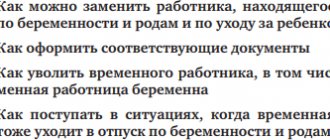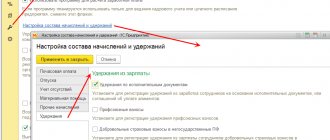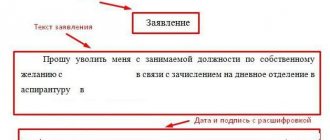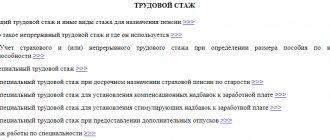Labor legislation in Russia is generally quite humane, and special attention is paid to pregnant and established mothers. This category of workers is protected from practically all work-related troubles. The biggest benefit for mothers is three-year retention of a place and provision of leave to care for children during this period. When a long vacation comes to an end and a woman must return to her professional duties, often at the first meeting with the employer she receives an offer to agree to dismissal after maternity leave.
Women's rights on maternity leave
Important! Please keep in mind that:
- Each case is unique and individual.
- A thorough study of the issue does not always guarantee a positive outcome. It depends on many factors.
To get the most detailed advice on your issue, you just need to choose any of the options offered:
- Use the online chat in the lower corner of the screen.
- Call: Federal number: +7 (800) 511-86-74
Most of the working-age population in our country, in the old fashioned way, use the Soviet concept of “maternity leave,” meaning by it the period when a woman leaves work for a long time to give birth to a child and care for him. In fact, this rather long period is divided into three different periods:
- prenatal (70 days, in a standard situation), Art. 255 TK;
- postpartum (the same 70 days, if the woman in labor has no complications), Art. 255 TK;
- leave allowing a woman to concentrate on her newborn until he is three years old, art. 256 TK.
During the first two stages, the maternity leaver not only retains her place, but is also paid an average salary. For the time remaining until the baby's third birthday, up to 1.5 years, she receives benefits and remains confident that she will be able to return to her position at any time. Moreover, during this period she cannot be disturbed by news of reductions and other global changes at the enterprise, except for its complete liquidation, Art. 261 TK. Some categories of mothers and adoptive parents retain immunity from dismissal after maternity leave for much longer than three years. The employer will be able to take the initiative and calculate them of his own free will only in the event of flagrant violations on the part of the “beneficiaries”.
Duration of maternity leave
As a rule, a woman goes on maternity leave at the 30th week (if pregnant with one child) or at the 28th week if several babies are expected. To receive leave, she must provide a certificate of incapacity for work received at the antenatal clinic. The duration of the maternity period varies in different situations. There are three periods of paid maternity leave:
- 140 days (70 prenatal and 70 postpartum) - this is the time off from work that a woman who has given birth to one child is entitled to if the birth proceeded normally.
- 156 days (70 and 86, respectively) are provided if the child is alone and the birth process was accompanied by complications.
- A mother who has given birth to several children is entitled to 194 days of rest (84 before childbirth and 110 after).
Often young mothers do not return to their work duties after this time and immediately take leave to care for the baby (up to a maximum of 3 years), so this period is also included in the concept of maternity leave.
It is important to remember that vacation is not automatically extended - you must write a special application at work. In any case, going on maternity leave or returning early to work is a woman’s voluntary decision. The employer cannot force her to take such leave or prohibit her from starting her duties before the end of the maternity leave. In addition, until the baby reaches three years of age, a woman can go on paid maternity leave and return at any time and as many times as she likes.
Reasons for dismissal
Returning to work after all possible “children’s” leaves have expired practically equalizes the position of the overwhelming number of women with all other members of the team. This means that a young mother who does not have additional statuses protecting her can be dismissed on any of the grounds listed in Articles 77-83 of the Labor Code. In order not to make excuses for this dismissal after maternity leave before inspectors or the court, the employer only needs to find legal grounds and correctly draw up personnel documentation.
On their own
Coming out of maternity leave and imminent dismissal is not so rare. The reason for refusing to resume working life can be both family circumstances and an objective understanding that during maternity leave a lot was missed in a professional sense.
Unfortunately, a woman is often let down by her own desire by her employer, arguing that she has been absent for a long time and has lost her skills. It may happen that a temporary employee in the place of a maternity leaver suits the bosses better. Then the employer can begin to force you to resign at your own request. Some employers believe that a small child will be an obstacle to the normal performance of work functions, and also force the woman to leave her place. Despite obvious moral pressure from management, the employer seeks to formalize such dismissal under Art. 80 TC (personal initiative of the employee). If this is your case, we strongly recommend that you read the material about whether an employer can stop
His own desire is his own, so that no one can influence his appearance. Therefore, if the mother herself is convinced of the need to go to work, then no arguments from her superiors can prevent her. It’s another matter if the employee really cannot work at full capacity, then you really need to write an application for payment, warning about this two weeks in advance.
The employer's insistence on writing a letter of resignation at his own request, due to leaving maternity leave and loss of qualifications, is a reason to seek protection of his labor rights. You should start with a complaint to the labor inspectorate.
Employer's desire
If the methods of influencing the mother who went to work had no effect, and the woman did not write a statement voluntarily, then some persistent employers are trying to come up with a reason to fire her according to the provisions of Article 81 of the Labor Code. Most often, a stubborn employee begins to be threatened that the reason for her dismissal after maternity leave at the initiative of the employer will be the results of the professional suitability assessment. Whether it is worth fearing such an exam at work is up to the former maternity leaver herself to decide. Everything will depend on her current position and the Certification Regulations approved at work.
The problem is that the Labor Code does not provide a clear explanation regarding the timing and rules for conducting personnel assessment in commercial organizations. There is only a mention of qualifications and the need to apply professional standards, if any, for a certain profession. This gap is often taken advantage of by employers who want to get rid of an employee with a small child.
A woman who finds herself in the position of an undesirable candidate needs to remember that the results of the certification, even carefully drawn up, cannot be the only basis for terminating the contract. And if her dismissal after maternity leave is summed up as incompetence, then she can protect her right to work and professional reputation with the help of several authorities at once:
- trade union;
- labor inspectorate;
- prosecutor's office;
- court.
It’s another matter if the employee committed gross violations of discipline, negligence, or was caught stealing. Then the employer will be absolutely right in his intention to pay the pest. And, provided that all procedures are carried out legally and formally, neither inspectors nor the court will be able to change his decision.
By agreement of the parties
The variety of situations that can arise between an employee who has returned to work and management is very large. Sometimes an employer would be glad to get rid of a specialist who has been absent for a long time, sometimes the employee herself does not want to remain in the team for her own reasons. If the desires of both parties to separate coincide, then the most correct thing is to formalize it as dismissal after maternity leave by agreement of the parties. After signing an agreement to terminate the employment contract, each party will receive what they want: the manager will have a free staff position, and the woman will be quickly released, without work.
Reduction
As soon as a child reaches the age of three, his mother is deprived of the immunity given to her by Article 261 of the Labor Code of the Russian Federation. That is why, immediately after returning, she, like any other member of the team, may be laid off. In fairness, it must be said that such a procedure is unlikely to be suitable for getting rid of a former maternity leave, because it cannot be carried out quickly. After all, you need to inform about the upcoming reduction in staffing two months in advance, make an effort to find a job (Article 180 of the Labor Code) and pay severance pay, as well as maintain the average salary for the next two, or even three, months (Article 178 of the Labor Code) .
You also need to understand that a young mother may not be included in the list of candidates for dismissal due to staff reduction due to her personal circumstances. So from dismissal under clause 2 of Art. 81 Labor Code, an employee can be protected by one or more arguments:
| Category of non-redundant employees | Degree of protection | Article of the Labor Code of the Russian Federation |
| Single mother with a child under 14 years old | Not subject to dismissal at the request of the employer, except in cases of violation of discipline, commission of a crime or ill health | Art. 261 TK |
| Family mother with a baby under 3 years old | ||
| Mother caring for a child with a disability (under 18 years old) | ||
| A woman providing for three or more young children alone if her husband lost his job | ||
| The presence in the family of two children or other dependent relatives of the employee | Protected from redundancy only if qualified and highly productive. | Art. 179 TK |
| Female workers who have ever been injured in this industry | ||
| Specialists who agreed to improve their qualifications at the direction of the employer | ||
| Disabled combatants |
In addition to time and financial investments, a lot of documentary work will also be required, so it is unlikely that, in order to dismiss an unwanted employee after maternity leave, management will want to initiate a similar process in the company.
Having recently returned from maternity leave does not protect a woman from being laid off if her productivity or professionalism is lower than that of other candidates, Art. 179 TK.
Liquidation
It’s another matter when an enterprise makes a difficult and final decision to stop operations and liquidate. In this situation, absolutely all employment contracts with all categories of workers are subject to termination. Leaving or not returning from maternity leave will not affect the fact of dismissal; even Art. 261 TK.
After the announcement of the closure of the company, the employer has the same obligations as with a partial reduction in staff or team size. A warning about the impending dismissal is given to everyone, and it is impossible to say that the dismissal occurs in connection with the release of an undesirable specialist from maternity leave. The employer notifies the entire team and the employment service two (sometimes three) months in advance, pays everyone severance pay and compensation, and also allocates funds to financially support former employees for the first two to three months of searching for new positions.
Statement: correct spelling
The application may be written by hand. The header contains the following information:
- to whom: write the position, full name of the person to whom the application is addressed, name of the organization;
- from whom: your position and full name.
The words "Statement" is the title. Then the wording is written: “I ask you to fire me of your own free will.” It is not necessary to write the reason.
Below: signature and date
You can add a clarifying entry: “I request the dismissal to be made “__”______ 2021.” Write a specific date. It must be calculated taking into account two weeks of work.
Document transfer methods:
- personally;
- by mail with a valuable letter with notification.
How to resign of your own free will
Returning from maternity leave, especially if it occurs in connection with the child reaching the age of three, equalizes a woman in many responsibilities under labor law. This means, in particular, that she must announce her intention to resign 14 days in advance. This must be done in writing and handed over this document to the person responsible for personnel (sometimes this role is assigned personally to the manager).
An application for dismissal after maternity leave without work can be submitted at any time. The main thing is to find a sufficiently serious reason that can convince the employer of his respect and the need to let the employee go right now. This reason must be indicated in the application, and for greater persuasiveness, supporting documents can be attached to it. This is no longer needed for the management itself, but to justify its position before inspectors or the court, if everything goes that far.
An example of a completed resignation letter can be viewed on our website ()
Deadlines
The law provides that writing a letter of resignation of one's own free will is a sufficient legal basis for its implementation.
It should be taken into account that if the employee subsequently did not want to leave and continued to work, then the validity of this document should be canceled.
On the other hand, let’s say the boss does not want to fire a valuable specialist and did not want to fire him. Then the employee simply does not continue to work after the date specified in the application and is considered dismissed by law, and the boss still has the responsibility to carry out the registration in accordance with the requirements of the law. This means issuing the appropriate order and filling out the corresponding pages of the work book, which must be issued personally to the former employee.
A situation is possible when, for some reason, you don’t want to wait 14 days, but leave your job right away. Of course, when the dismissal is formalized during maternity leave or after it, during the next paid vacation, this problem is not relevant if these days pass during the vacation period.
Although working for two weeks is an obligation provided for by law, the boss can nevertheless accommodate and reduce this period of time.
Payments and compensations
Dismissal after maternity leave implies a number of compensations. Their size and composition strongly depend on the reasons for leaving and its initiator. Payments following dismissal after maternity leave include:
- salary for the time that the woman managed to work;
- compensation for unclaimed days of paid rest;
- severance pay (“average” for one month);
- financial support for those who decided to look for work through the labor exchange (up to the third month of the search);
- any other support or compensation amounts specified in the employment or collective agreement.
The natural conclusion will be that in case of dismissal under most clauses of Article 81 of the Labor Code, which state the guilty actions of the dismissed persons, there is no talk of any incentive or auxiliary payments from the employer. In addition to legally established compensation, the contract may provide for additional payments for employees leaving after maternity leave.
How to calculate
Dismissal after maternity leave does not affect the calculation of farewell payments in any way. The rest of the salary for days worked is calculated based on the payment method established in the company: at daily or hourly rates, or in proportion to the monthly salary.
Another thing is compensation for dismissal after maternity leave. To correctly calculate these payments, the accountant will need to refer to Article 139 of the Labor Code and Regulation 922. They assume that the accounting service will make a sample of the amounts earned for the previous year. This amount must be divided by 12. Based on the received quotient, severance pay and compensation are calculated for the duration of the search for a new place. Dividing the average monthly income by 29.3, the accountant will receive the amount that is used to calculate compensation for days of primary and additional vacations not taken off. It is worth saying that when a young mother is fired, compensation for leave after maternity leave is quite rare. After all, even before giving birth, a woman, in an effort to reduce her work load, tries to take all the time off that is due to her, and sometimes a little more.
When are payments due?
When the dismissal after maternity leave has already taken place and a clear answer has been found to the question of how to calculate severance payments, all that remains is to decide on the dates and deadlines for the implementation of the calculation.
Most amounts, such as wages, compensation for vacation (not for maternity leave), severance pay, if due upon dismissal, as well as any benefits under the collective agreement, are paid on the last working day. As a last resort, the next one, if the employee could not be present on site at that moment. The average earnings retained by employees for the period of new employment are transferred to employment authorities, and only then issued to the person. Its final amount depends on how quickly the former employee finds another employer.
Algorithm for calculating severance pay
The calculation of average earnings in this case differs from the calculation of this value carried out to calculate compensation for unrealized vacation.
Basics of calculation:
- based on payments for the year preceding maternity leave or the period actually worked;
- basis: Resolution No. 922 of December 24, 2007
Formula for calculating benefits:
VP = D / OD,
where VP is severance pay: average monthly income to receive payments for the next 3 months of unemployment, etc.;
D – income equal to wages for the year that preceded the decree, with the exception of payments under Resolution No. 922, etc.;
OD – the total number of days worked during the year that preceded the start of the maternity leave, according to the schedule, days.
Example No. 2. Initial data:
- salary 30 tr;
- 20% bonus;
- surcharge for harmful conditions - 15%;
- quarterly bonus – 50%.
Calculation:
- salary amount for the year: 30 * 12 = 360 TR;
- bonus amount: 30 * 0.2 * 12 = 72 tr;
- amount of allowance for harmful conditions: 30 * 0.15 * 12 = 54 tr;
- amount of bonuses: 30* 0.5 * 4= 60 TR;
- total amount of payments: 360+72+54+60 = 546 tr;
- amount per month: 546 / 12= 45.5 tr;
- amount per day: 45.5/29.3 = 1.55 tr;
- the benefit will be 45.5 tr.









